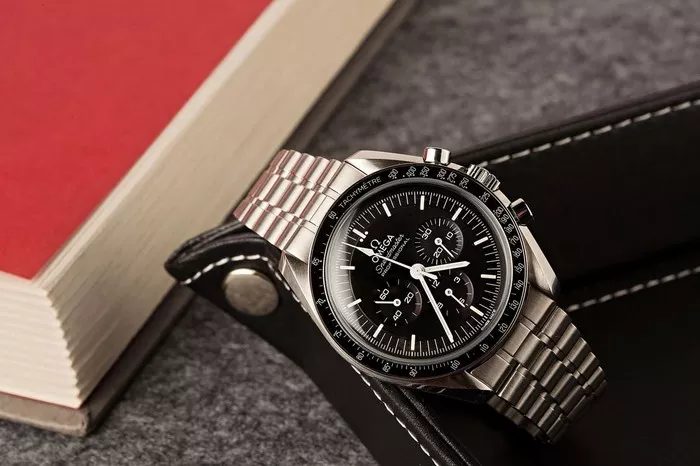The Omega Speedmaster is a legendary chronograph with a rich history and a reputation for precision and durability. One question that often arises among watch enthusiasts is whether it’s possible to overwind an Omega Speedmaster. This article explores this topic in detail, offering a comprehensive understanding of overwinding, the mechanisms of the Speedmaster, and practical advice on how to handle this esteemed timepiece.
Understanding Overwinding
What is Overwinding?
Overwinding occurs when a watch’s mainspring, the component that stores energy, is wound beyond its capacity. This can potentially cause damage to the watch’s movement. The mainspring is designed to hold a specific amount of energy, and excessive winding can strain or break it.
Mechanics of Mainspring Winding
The mainspring is a tightly wound coil of steel. When you wind the watch, the coil tightens, storing energy. This energy is gradually released to power the watch. Modern watches are designed to prevent overwinding by incorporating a slipping clutch mechanism.
Omega Speedmaster: A Brief Overview
History and Significance
The Omega Speedmaster, often referred to as the “Moonwatch,” is renowned for its role in NASA’s Apollo missions. It was the first watch worn on the moon and has a storied history of precision and reliability.
Movement and Mechanism
The Speedmaster typically features the Omega Caliber 1861 or its successor, the Caliber 3861. These movements are manual-wind chronographs, meaning they require winding to operate but do not have an automatic winding mechanism.
The Omega Speedmaster and Overwinding
Manual-Wind Mechanism
The Omega Speedmaster uses a manual-wind movement. This means that the user must manually wind the crown to store energy in the mainspring. Understanding the winding mechanism is crucial to addressing concerns about overwinding.
Slipping Clutch System
Omega Speedmasters are equipped with a slipping clutch mechanism. This system prevents overwinding by allowing the mainspring to slip once it reaches its maximum tension. This design feature ensures that winding beyond this point does not cause damage.
Winding Process
To wind your Speedmaster, turn the crown clockwise until you feel resistance. The movement is designed to handle this resistance without causing harm. It is important to stop winding once you reach the point of resistance.
See Also: What Are The Dials On Omega Speedmaster
Practical Advice on Winding
Daily Winding Routine
It is generally recommended to wind your Speedmaster once daily if you are not wearing it regularly. This ensures that the mainspring is kept in optimal condition. Winding the watch once a day also keeps the lubrication within the movement evenly distributed.
Avoiding Overwinding
Follow these tips to avoid overwinding your Speedmaster:
Feel the Resistance: Stop winding when you feel the increased resistance. This indicates that the mainspring is fully wound.
Use the Crown Properly: Avoid excessive force when winding the crown. Gentle, consistent pressure is sufficient.
Regular Winding: Establish a routine to wind your watch daily if it is not in use.
Common Misconceptions
Myth: Overwinding is Common
One common misconception is that overwinding can easily occur with manual watches. With modern watches like the Omega Speedmaster, this risk is minimized due to the built-in slipping clutch system.
Myth: All Manual-Wind Watches Are Prone to Overwinding
Not all manual-wind watches are equally susceptible to overwinding. High-quality timepieces like the Omega Speedmaster are engineered to prevent such issues through advanced mechanisms and design features.
Maintenance and Care
Regular Servicing
Regular servicing by a professional watchmaker is essential to keep your Speedmaster in top condition. Servicing typically involves cleaning, lubricating, and checking for any potential issues, including those related to winding.
Handling Tips
Store Properly: When not in use, store your Speedmaster in a watch box or winder. This prevents unnecessary wear on the winding mechanism.
Avoid Impact: Protect your watch from physical impacts and extreme conditions, which can affect its functionality.
Conclusion
In summary, while the concept of overwinding is a legitimate concern for many manual-wind watches, the Omega Speedmaster is designed to mitigate this risk. Its advanced slipping clutch mechanism ensures that overwinding is not an issue if the watch is handled according to the manufacturer’s recommendations. By understanding the winding process and adhering to proper care routines, you can enjoy the timeless accuracy and reliability of your Omega Speedmaster for years to come.

